Despite being one of the world’s biggest Android manufacturers, Samsung — like most OEMs these days — has been feeling the burn of shrinking market share and declining sales. Although last year’s Samsung Galaxy S6 signaled a major shift for Samsung in the design department (a great one, we might add), the device ultimately fell short in a few key hardware areas many longtime fans cared about most. The Galaxy S6 had a smaller battery than the Galaxy S5 and removed the convenience that comes with having a removable battery and micro SD card slot.
For this year’s Samsung Galaxy S7, Samsung is not only gunning for new customers with one of the most compelling handsets on the market, but trying to win back old users or perhaps those that were holding off on upgrading their S5s. With a bag full of tricks at its disposal, is the Galaxy S7 not only a worthy successor to the S6 but the S5 as well? Read on for more.
Design & Hardware
If it ain’t broke, don’t fix it. There’s no arguing that the Galaxy S7 looks nearly identical to last year’s Galaxy S6 and we’re okay with that. Although last year’s S6 did share a few design characteristics with the iPhone 6/S, the Galaxy S7 distances itself from Apple’s design with a few small changes. For one, Samsung no longer seems to be pursuing the dream of building thinner smartphones every year, adding a little junk in the Galaxy S7’s trunk and increasing battery capacity to 3,000mAh. That’s actually the same size as the larger phablet Galaxy Note 5 and S6 Edge Plus that launched last year, now crammed into a petite, 5.1-inch smartphone. This is easily one of our favorite aspects of the Galaxy S7, the fact that it’s one of the most powerful smartphones you can buy in a footprint many Android OEMs are now calling “mini.” It’s a huge win for us.
The S7 still features the same sturdy aluminum frame as the S6, sandwiched in between two silky smooth pieces of 2.5D glass. This time around, the back glass is slightly curved, mirroring the design we saw on the Galaxy Note 5. The thickness of the phone also makes the camera housing protrude a lot less, sticking out about as much as the iPhone 6S’s. There’s nary a sharp edge or corner to be found. The Galaxy S7 is smooth, svelte, and gives you that premium feeling up until recently, only HTC or Apple was able to provide.
Samsung has officially retired both the forest green and darker red colors for the Galaxy S7, launching only the silver, black (it’s really black this time), and gold options here in the US. Strangely absent is the white model we saw at MWC, but there’s always the possibility this will come at a later date.
Display
One the display front, you’ll find Samsung’s tried-and-true 5.1-inch AMOLED panel. At 2560 x 1440 resolution, it’s very similar to last year’s model, only Samsung’s made the display about 25% brighter, while allowing you to better customize auto-brightness to suit your tastes. It’s also much whiter/cooler than the display on the Galaxy S6, noticeably so when holding the 2 side-by-side. The gamma is a bit too punchy for our tastes but with deep blacks (a little too deep) and colors that pop, it’s the quality you’ve come to expect from Samsung and one of the best reasons to buy the phone. Nobody comes close to this quality. Nobody.
New for the Galaxy S7, Samsung has added an “Always On” display, a sort of widget that displays the time, date, battery life, notifications and other helpful information right on your sleeping phone. Additional Always On widgets can be downloaded and some even come as part of the many themes available in Samsung’s Theme store. To help reduce burn-in, the widget changes position around the display every so often. Samsung says the hit to battery life is minimal — about 0.8mAh per hour — which didn’t seem to impact battery life much at all during our testing. Still, for those that want to milk every last drop out of their devices, you’ll want to keep it off (don’t worry, it’s not enabled by default).
Storage (return of the micro SD card)
After stripping away a micro SD card slot in last year’s S6, Samsung wised up and added it back in the S7. Although it supports up to 200GB cards, Samsung made the controversial decision to remove the ability to use the SD as internal storage (adoptable storage), a core Android feature introduced in Android 6.0 Marshmallow. This, apparently, had something to do with Samsung using the more advanced UFS standard for internal memory on the Galaxy S7 and not wanting the big differences in read/write they’d encounter by using slower micro SD. There is a hack to enable adoptable storage in the S7 that doesn’t require root, but you’ll need to have a knowledge in ADB to get working. Even though adoptable storage is a core Android feature, in the end, manufacturers get the final say in what features to leave in or take out.
As it stands, only the 32GB Galaxy S7 is available in the US and with 8GB of that being used just for the system OS itself, you’ll need to stay on top of managing all the apps, games, photos, and videos you have stored on the device. Sure you can still move some apps to the SD card, but not every single app or game supports this feature. Managing storage is never fun and while there are plenty of cloud storage apps and services available to users, the vast majority of casual users won’t even bother. Remember, last year’s Galaxy S6 came in 3 storage options: 32, 64, and 128GB varieties. We would have loved to have seen at least a 64GB Galaxy S7 here in the US, even if we had to pay a little more for it.
Water resistant and IP68 certified
Like the Galaxy S5 before it, the S7 marks the return of a fully water resistant smartphone. Using careful, clever design, the phone is capable of withstanding up to a 1 meter fully submerged in for about a half hour thanks to its IP68 dust/water resistance rating. This doesn’t mean the phone is meant to be taken into water, it’s more or less an added layer of protection to prevent any damage should an accidental drop into water occur. We have to admit, not a single device we’ve ever owned has gone to a watery grave, but the same can’t be said of our friends and family. Accidents happen and the added peace of mind introduced in the Galaxy S7 is certainly welcomed.
The best part about water resistance in the Galaxy S7 is the annoying charging port flap we saw in the S5 is no longer a requisite. In the event that water is left over in the charging port, the S7 is smart enough to detect moisture and will refuse to charge until dry. Should that be the case, wireless charging is still an option. If there was a downside to the waterproofing of the Galaxy S7, it’s that it’s made the once great speaker of the S6 sound horribly tinny, muffled and all around terrible. But alas, that’s just something that comes with the turf (the waterproof screen covering the speaker doesn’t allow for water or much air to pass).
Wireless charging
Leading into the next big hardware feature, the Galaxy S7 once again brings support for wireless charging. It’s pretty much the same as we saw in last year’s model and that’s great. Where other Android OEMs have slowly moved away from wireless charging in their devices, Samsung is still sticking with it, going the extra mile by incorporating 2 major wireless charging standards and even adding support for fast wireless charging for less downtime.
You’ll need a wireless fast charging compatible base, but relatively inexpensive 3rd party options are plentiful on Amazon. Wireless charging, while not as convenient as traditional wired charging, still has its benefits. Should you find yourself making a pit stop in Starbucks, the Galaxy S7 is one of the few devices you can set on their wireless charging tables and juice up.
Micro USB with Quick Charge 2.0
Whatever the reason Samsung chose to stick with a micro USB port over the newer Type C standard, we applaud them for it. Micro USB has been around for the better half of a decade and all of our favorite electronic devices are already using it. That means we have countless cables laying around and they’re so common that, should you forget to bring one on a trip or outing, there’s a good chance someone out there can spot you. We’ll admit, the reversible nature of USB Type-C is nice, but it’s still the wild west. The vast majority of 3rd party cables — at least right now — are faulty and could end up frying your phone. Oh, and heaven help you find a cable at your local Target or Walmart should you ever lose one. USB Type-C might be the future, but we’re more than content hanging onto micro USB for just a little while longer. Just until Type C gets its sh*t together.
Our only complaint is that Samsung made the strange move to stick with Quick Charge 2.0 — not the even faster Quick Charging 3.0 spec — despite being supported by the new Snapdragon 820 processor. The battery still charges plenty fast enough, getting us from 0-100% in just under an hour. Oh, and should you decided Fast Charging just isn’t for you (some believe it’s not good for long term battery health), Samsung added the option to turn it off in the Settings app. Just remember that the phone only Fast Charges while the display is off, so if you’re in a hurry to get juiced up the quickest, you’ll want to leave the phone alone.
Fingerprint sensor
While it seems not much has changed with the fingerprint sensor moving from the Galaxy S6 to the Galaxy S7, the speed of recognition has gone up substantially. It’s hard to measure it, but we’d say the speed is about twice as fast as it was on the Galaxy S6, whether that has something to do with the Snapdragon 820, or other under the hood changes, we can’t say. We do know Samsung is supporting both their own fingerprint API, as well as those introduced in Marshmallow. That means whichever method developers choose to support — whether it’s for making purchases or authenticating your identity — the Galaxy S7 has you covered.
Samsung Pay
Like most Android devices these days, the Samsung Galaxy S7 is outfitted with an NFC chip for mobile payments, but also brings the added benefit of Samsung Pay. Using MST technology, Samsung Pay works just about anywhere you already use a physical credit card (magnetic readers), so you don’t have to worry about finding a Tap-to-Pay compatible terminal. Samsung’s newer crop of Android devices are the only ones that feature this technology and this includes the Galaxy S7. Should you wish to go the traditional route and use something like Android Pay, you have that option as well.
Although it’s available out of the box on most Galaxy S7s, some carriers — like Verizon Wireless — have actually removed the app for the S7’s launch. It’s not permanent and Verizon says they have plans to make it available via download later. This is something we’d recommend everyone with an S7 jump on, especially given the numerous incentives Samsung has been offering by way of promotional goodies (gift cards, free accessories, that sorta thing).
Performance and Battery
For this year’s Galaxy S7, Samsung has opted to go with Qualcomm’s latest and highest performing processor currently available — the Snapdragon 820 — but only for some markets. In other regions, you might see Samsung’s in-house Exynos 8890 (like Canada), but since the Qualcomm model is the only available in the US, that’s what we’ll be commenting on. The Snapdragon 820 features a 64-bit quad-core Kryo processor built using the new 14nm FinFET manufacturing process. It’s smaller, faster, and supposed to be more power efficient that anything Qualcomm has made to date and in theory, should make anything you stick this processor into fly. Oh, and there’s also an Adreno 530 GPU with support for the Vulkan 1.0 API for console-like 3D mobile gaming.
Benchmarks are predictably through the roof and in real-world use, the phone had no trouble opening apps blazingly fast. The best part is it appears Samsung fixed the aggressive RAM management issue we saw in last year’s Galaxy S6. That’s not to say the performance was consistent. There’s a slight delay when opening apps from the home screen (either TouchWiz or 3rd party launchers), something we’ve seen in countless iterations of TouchWiz and at this point, is probably a deliberate move by Samsung although, we can’t for the life of us figure out why. Wouldn’t want people moving around the OS too fast now, would we?
We also frequently encountered stutters, hangs, and choppiness in some areas of the UI, even when opening something as simple as the Settings app. We’re only talking mere milliseconds here, but when downloading videos, updating apps, backing up photos, opening keyboards, and posting GIFs to social networks — it all adds up and the Galaxy S7 can, at times, struggle to keep up. You can argue that 99% of people who buy this phone likely won’t notice these issues, but if you’re a speed junkie who values performance of their smartphone above all else, you may be left disappointed.
Battery life was also something that left a lot to be desired. Every year you hear about new processors or tweaks made to the Android OS that are supposed to bring these big changes in battery life — we’ll admit, Doze actually works as advertised — but in the end, we’re struggling to get through a full day’s use. The Galaxy S7, while an improvement over last year’s Galaxy S6 thanks to a larger 3,000mAh battery (18% bigger than its predecessor), was still only able to give us about 11+ hours with about 2-3 hours of screen on time.
While it’s impossible to predict how far the Galaxy S7 will get you (everybody’s use is different), it was about on par with devices like the Nexus 6P or Moto X Pure Edition. Nothing dramatically better or worse. We’re sure it’s possible to get more mileage using battery saving tips like these, but we like to enjoy our phones to the fullest. At least while we’re testing them. In the end, battery life on the Galaxy S7 was nothing to write home about and any improvement over battery life on the Galaxy S6 was negligible.
Camera
Samsung’s Galaxy S line has long been offered some of the best quality images on mobile. The Galaxy S7 is no different. For this year’s model, Samsung went with a Sony IMX260 camera sensor and made the interesting move forgo a dual-camera setup like on the LG G5 (and is also rumored for the Apple iPhone 7), instead going with a single f/1.7 lens and the Nexus 6P/5X route of bigger (but less) 1.4μm pixels for better low light shooting.
The HTC One M8 pioneered this with their “UltraPixel” camera many years ago and the same pitfalls many had with that method apply here, only much less severe. That means you’ll have lower resolution images on the Galaxy S7 — now 12MP, down from the Galaxy S6’s 16MP — but we think it’s a wise trade-off. Smartphones have a long history of struggling in less ideal lighting conditions. Shoot in a dimly lit restaurant or even indoors and you’ll see a big drop off in image quality. With that Galaxy S7, that has been vastly improved with brighter, clearer, and more color-rich photos in lower lighting conditions. Even with HDR enabled, they don’t look anywhere near as impressive as we saw in the Nexus 6P and HDR+ enabled, but they do fire off much quicker.
You lose a lot of detail when shooting in HDR mode (right), without (left)
Another upgrade to the camera and arguably a bigger deal than its improved low-light shooting is the Galaxy S7’s new Dual Pixel auto focusing system. It’s so quick, it’s virtually imperceptible to the human eye. Move from one subject to the next and before you can get even think twice, it’s already in focus. Samsung says the new camera sensor uses all 12 million pixels to act as focus pixels. The end result is auto focus that’s 3 times faster than what we saw on the Galaxy S6. Comparing the two devices, their claims certainly hold true. It’s incredible to say the least even in low lighting conditions where just about any other smartphone camera struggles.
That’s not to say we loved everything about the new Galaxy S7 camera. Samsung appears to go way overboard with noise reduction, resulting in smooth, almost painted looking images. All of this while applying a crazy amount of sharpening to make photos artificially appear clearer. When cropping photos or zooming in slightly, these issues are immediately apparent, especially on that beautiful 2K display and even more so when compared against the Galaxy S6. You just have to remember the majority of the world is still viewing photos in 1080 or 720p. It’s just a preference, but we definitely miss the extra detail and pin sharp clarity found in last year’s Galaxy S6.
Software
Diving into the software experience on any Galaxy device is always daunting. This year, we’re not seeing too much of a change in TouchWiz — Samsung’s custom UI they put on top of Android — from last year’s Galaxy S6. Most of Samsung’s apps have gotten a new coat of paint and there are a handful of new features that arrived as part of the update to Marshmallow. Things like app permissions are now asked on demand, Google Now on Tap can search everything displayed on the screen, and the fingerprint sensor is now supported natively by the OS.
When it comes to their own software features, Samsung is still very much taking the kitchen sink approach, although we will admit there are some truly useful new tools that actually enhance the user experience (whether you’ll use them or not, is another story). We’ve pretty much covered every single one of these in our 50+ Galaxy S7 Tips & Tricks post, so I’ll briefly list a few of the more notable features Samsung brings to the table down below.
- Theme Store – change the entire look of your device using free or paid themes.
- Easy mode – a super simplified home screen (launcher).
- Smart Switch – helps you copy content from an old device to a new device.
- Game Launcher – an icon on your home screen/app drawer where you’ll find all your games and helpful settings like power saving mode, no alerts, and Game Tools.
- Game Tools – provides quick access to features like no alerts during games, lock recents/back keys, minimize game, screenshot, and record screen.
- Smart stay – uses front-facing camera to detect your face and keeps the screen on while you’re looking at it.
- One-handed operation – makes it easier to use your phone with one hand by shrinking the UI.
- Pop-up view gesture – view an app in pop-up view by swiping diagonally from the corner of the display.
- Split screen view – open and view 2 apps side-by-side (not all apps support this feature).
- Palm swipe to capture – swipe the edge of your hand over the display to perform a screen shot.
- Smart capture – additional options you can use after performing a screenshot (capture all, crop, or share).
- Direct call – directly call a contact whose message, call log, or contact details are currently being displayed by placing the phone to your ear.
- Smart alert – phone will vibrate when picking it up to notify you of missed calls and messages.
- Easy mute – mute incoming calls and alarms by placing a hand over the screen or turning the phone over on its display.
- Power saving / Ultra Power saving mode – limits performance, vibration feedback, and restricts location and background services to prolong battery life. Ultra is more extreme with the simplified home screen, black and white color scheme, and only allowing phone essential apps to run in the background.
- App power saving – places apps into hibernation if they haven’t been used in 3+ days (can be configured).
- Sound quality and effects – this is a built-in equalizer you can tune for audio tailored to your tastes.
- Smart Manager – manage your storage, view battery usage, free up RAM, and check security status. This feature is redundant and at best, totally unnecessary.
Every year we talk about how bloated and overbearing Samsung’s TouchWiz software has become, but we have to admit it’s starting to grow on us. If nothing else, it’s consistent. Those who have used a Samsung device in the past know exactly what they’re getting themselves into and will immediately feel at home. Yes, performance seems hampered by it, but that’s always been the case and likely always will. You don’t buy Samsung latest flagships for a near Nexus-like experience or snappy performance. It doesn’t seem as much of a negative now as it is, sadly, expected.
We could talk all day about how much we’d love this device if it was running near-stock Android software, but it’s not, and nothing is ever going to change that. Not even 3rd party ROM development is likely to help. Android enthusiasts will find the bootloader on the Galaxy S7 is especially locked down (more so than usual), so those hoping to slap an AOSP ROM on this thing will end up disappointed. If this is a deal breaker for you, you’ll want to look elsewhere at least for the time being. T-Mobile did say they’re trying to work with Samsung on a solution, but for the most part it’s largely out of their hands.
As for the future, looking at Samsung’s track record you can expect to receive regular monthly security updates for the Galaxy S7, but when it comes to major Android releases, those tend to take a little longer. Last year’s Galaxy S6 has only just begun receiving Android 6.0 Marshmallow in the US which should give you an idea of what to expect for the S7.
Conclusion
There’s no question the Galaxy S7 is, as a piece of smartphone hardware, by far the best Samsung has ever built. It’s a direct answer to some of the most glaring shortcomings found in last year’s model, a welcomed upgrade from the Galaxy S6. Samsung’s kitchen sink approach to both hardware and software has been refined over the years with the S7 being the successful culmination of all those years of R&D. It may not be such a huge leap if you’re coming from an S6 (even less so if you already have a Note 5 or Galaxy S6 Edge Plus), but anyone looking to upgrade their 2-year-old device will be blown away.
It took them a good while, but Samsung has proven they are not only the king of low-end, bargain bin devices, but that they can also build premium, high-end handsets that border on the edge of luxury. It’s something that’s not all too common in Android and the Galaxy S7 is one of the few devices that actually feels as solid and well-built as an Apple product — and that’s saying something.
A wonderful mix of fast performance, best display on the market, powerful camera hardware, and more software features than you can shake a stick at, the Galaxy S7 is the Mercedes-Benz of Android devices with a price tag to match. If you’ve never found yourself considering a Samsung device for whatever reason, the Galaxy S7 should be the phone to change your mind.
But again, this kind of hardware doesn’t come cheap. Priced at $650 (and $750 for the larger Edge model) you’ll probably want to consult the Mrs before diving in. Of course, we’re sure the vast majority of folks picking one up will be doing so through the multitude of payment options available from most major carriers. No matter how you buy it, we’re sure you’ll be more than happy with the Galaxy S7, we know we are.
Samsung Galaxy S7 Rating: star_fullstar_fullstar_fullstar_fullstar_50 (4.5 / 5)
The Good
- Fast performance
- Best display on the market
- Great camera
- Water resistant
- Wireless charging
- Unrivaled build quality
The Bad
- Can’t use SD card for internal storage
- Not-so-great battery life
- Terrible speaker quality
- Expensive
The Bottom Line
Samsung’s kitchen sink approach to both hardware and software has been refined over the years with the S7 being the successful culmination of all those years of R&D. Samsung has made improvements to answer some of the most glaring shortcomings found in last year’s model, but it’s still not a huge upgrade for anyone coming from the Galaxy S6. This could be the Android phone to beat in 2016.


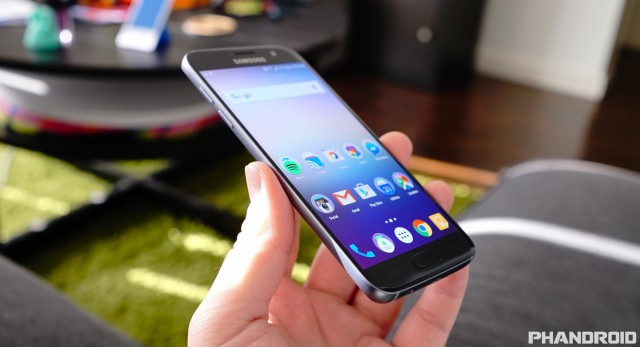
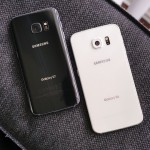
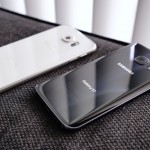
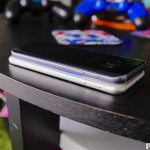

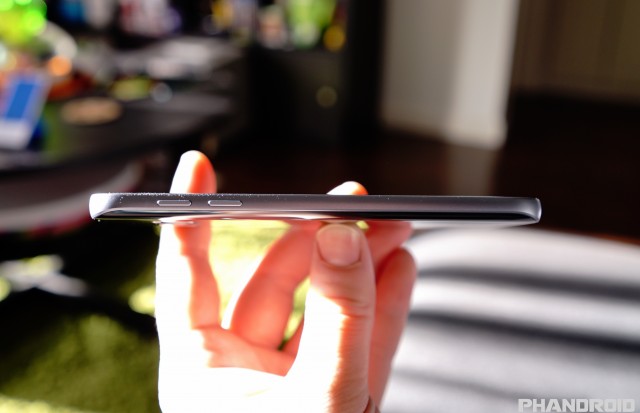
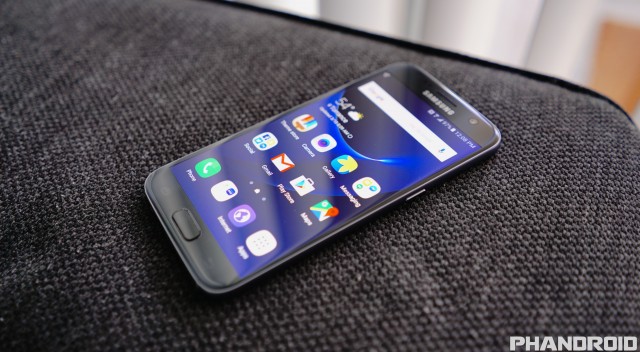
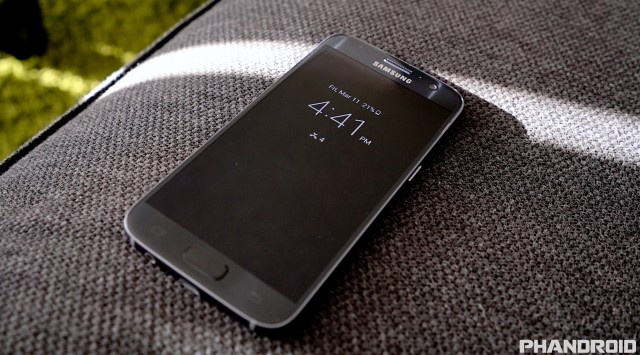
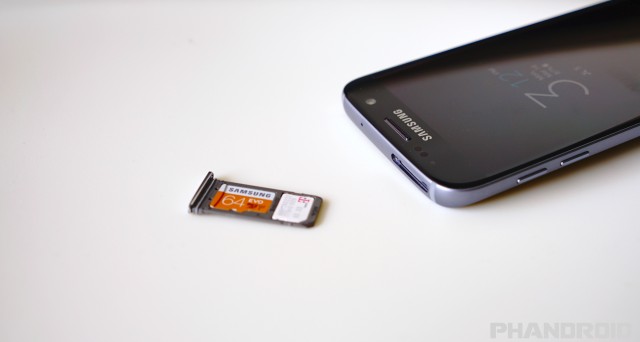

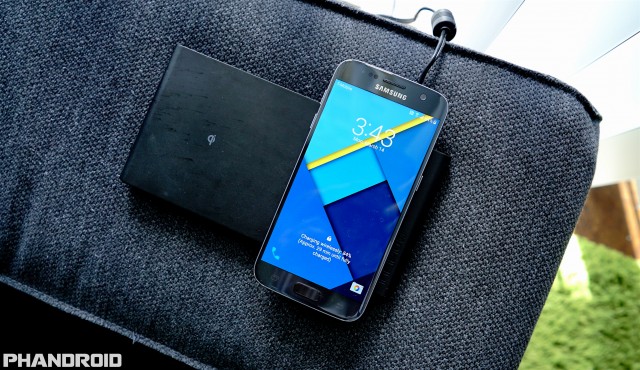
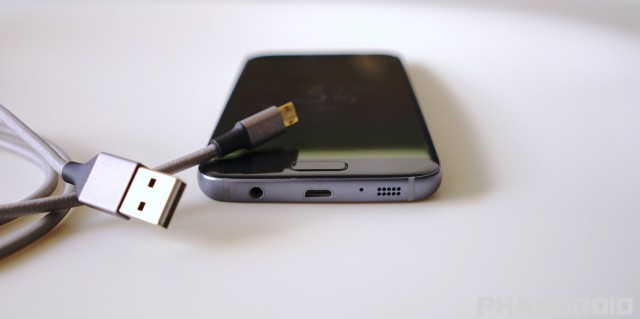
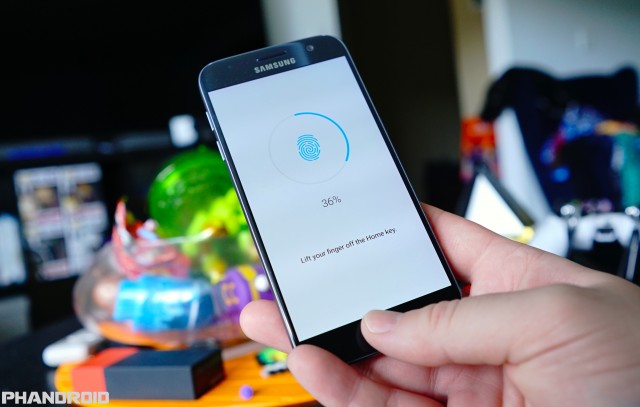
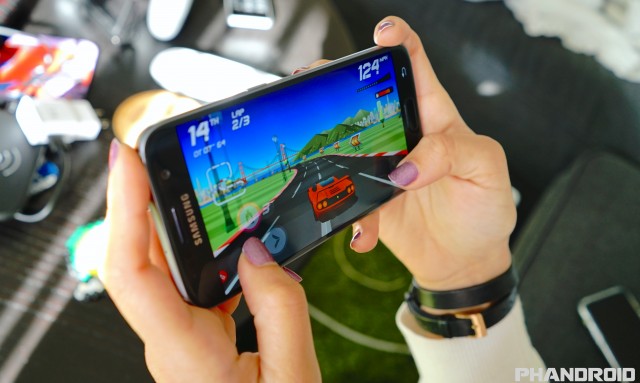
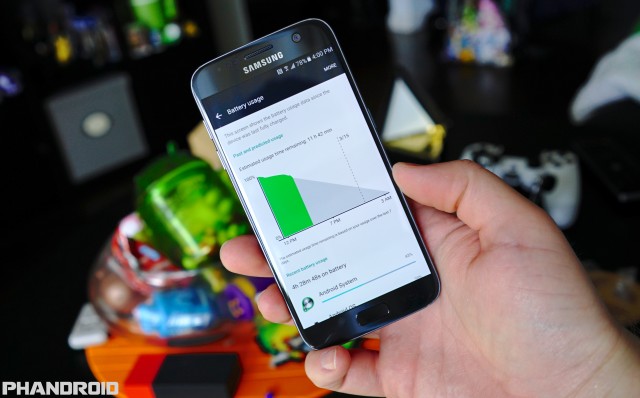
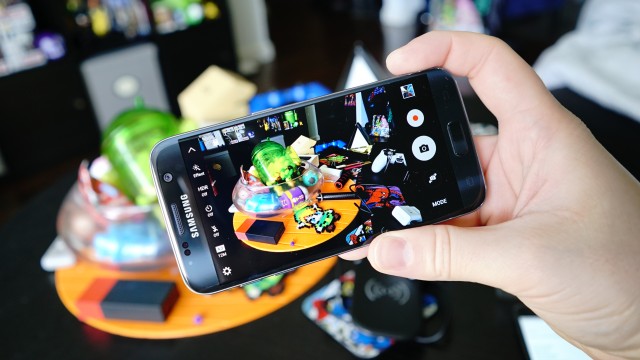




































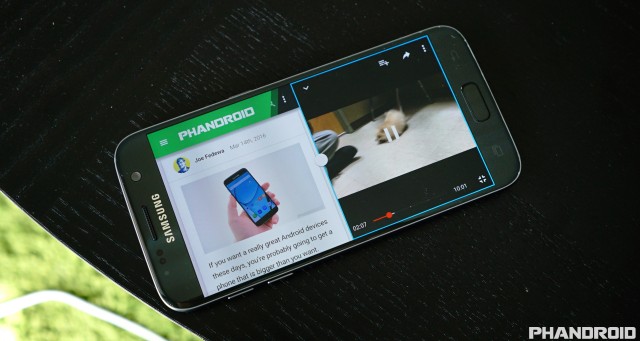
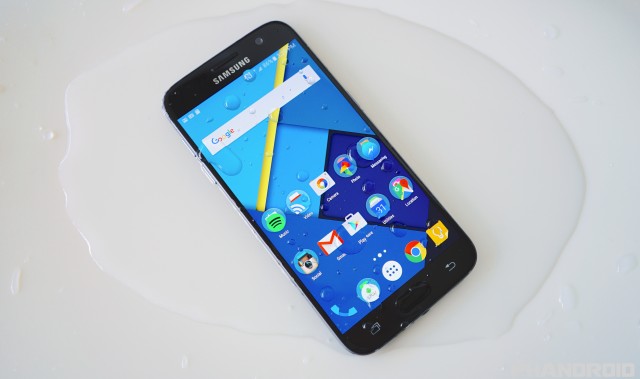

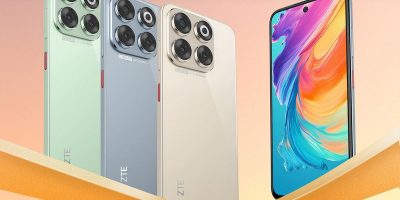







Comments